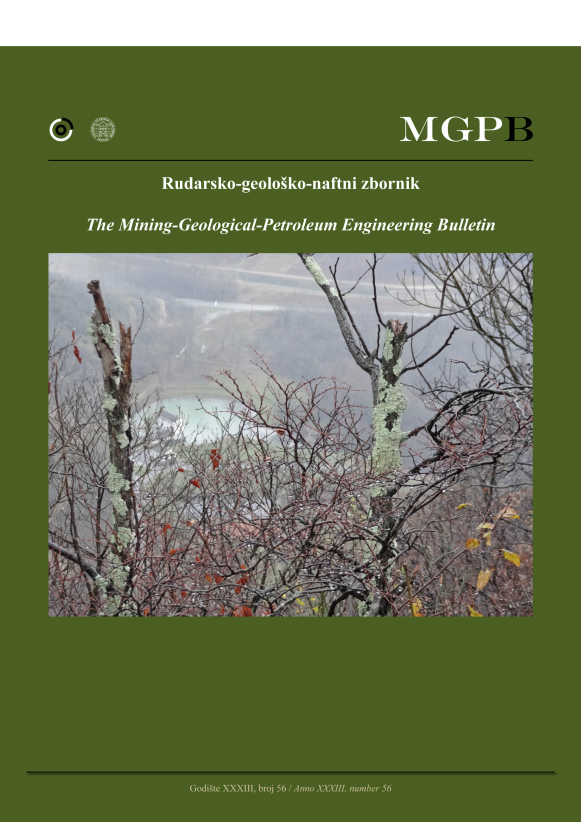Simulation of aquifer remediation from low-permeable lenses by back-diffusion phenomenon
DOI:
https://doi.org/10.17794/rgn.2021.5.6Keywords:
Lattice Boltzmann Method (LBM), contamination back-diffusion, low-permeable lenses, aquifer remediation, dual permeable medium (DPM)Abstract
Fluid flow in a dual permeable medium (DPM) is essential in solute transport in mining and aquifer studies. In this paper, water flushing into a contaminated DPM containing fine-grained lenses with different geometries was investigated with the Lattice Boltzmann Method (LBM). The LBM model used in this study was D2Q9 with a relaxation time of 1, a cohesion value of 3 for a fluid density of 1 (mu.Lu-3). The saturated fluid in the DPM was a contaminant that usually stays in low permeable lenses and after flushing, it is leaked into the porous medium by a second fluid (water). This phenomenon is predominant when the displacing fluid has a lower concentration than the contaminated fluid. Diffusion and advection are the main mechanisms that control fluid flow in the porous medium. The results of the simulations showed: (1) advection controlled solute transport through the flushing phase, and back-diffusion occurred after the change in phase; (2) the lenses’ geometry influenced the fluid flow pattern and the remediation process. As a result, aquifer remediation strategies based on the lenses’ geometry and their permeability can help us select the appropriate environmental protection.
Downloads
Published
How to Cite
Issue
Section
License
Copyright (c) 2021 authors and journal

This work is licensed under a Creative Commons Attribution 4.0 International License.
Creative Commons-BY
Authors who publish with this journal agree to the following terms:
In agreeing this form, you certify that:
- You read the ethical codex of the RGN zbornik available at journal web.
- You submitted work is your original work, and has not previously been published and does not include any form of plagiarism.
- You own copyright in the submitted work, and are therefore permitted to assign the licence to publish to RGN zbornik.
- Your submitted work contains no violation of any existing copyright or other third party right or any material of an obscene, libellous or otherwise unlawful nature.
- You have obtained permission for and acknowledged the source of any illustrations, diagrams or other material included in the work of which you are not the copyright owner.
- You have taken due care to ensure the accuracy of the work, and that, to the best of your knowledge, there are no false statements made within it.
- All co-authors of this submitted work are aware of, and in agreement with, the terms of this licence and that the submitted manuscript has been approved by these authors.
Publication licence
You retain copyright in your submitted work, according to journal license policy (CC-BY). By signing this form you agree that RGN zbornik may publish it under the publication licence. In summary the licence allows the following:
Anyone is free:
- To copy, distribute, display, and perform the work.
- To make derivative works.
Under the following conditions:
- The original author must always be given credit.
- The work may not be used for commercial purposes.
- If the work is altered, transformed, or built upon, the resulting work may only be distributed under a licence identical to this one.
Exceptions to the licence
In addition to publishing the work printed under the above licence, RGN zbornik will also enable the work to be visible online.
The journal editorial can change the licence rules anytime but it cannot retroactively restrict author(s) rights.


